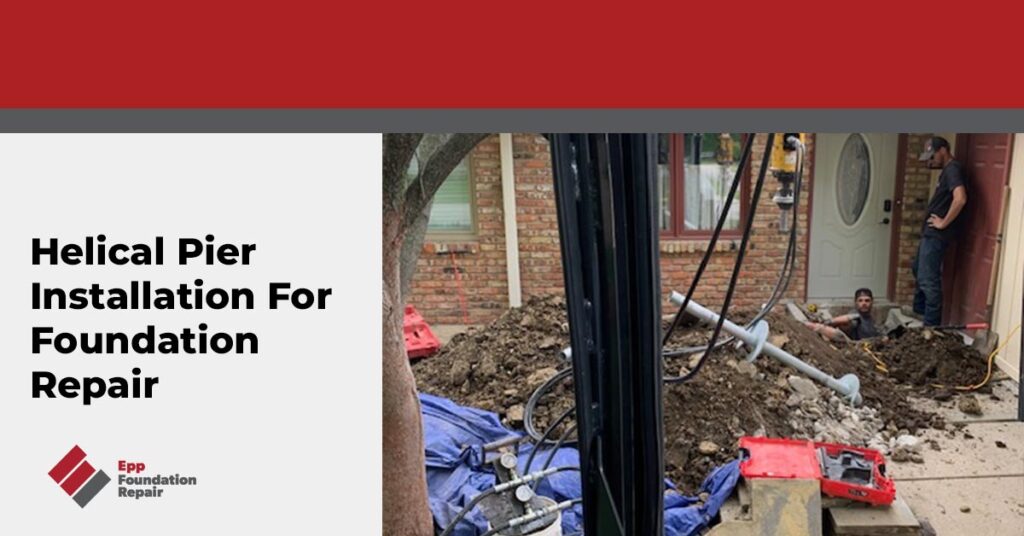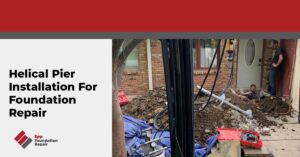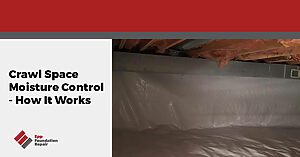Looking for information about helical pier installation? If so, don’t hit that back button because you’ve landed on the right page. In this article, we’re going to review helical piers, their installation, cost, and more.
What Are Helical Piers?
Helical piers are steel shafts that look something like giant corkscrews. They’re used to support new construction projects requiring a deep foundation system and existing structures that need their foundation strengthened. Helical piers come in a variety of sizes and weights.

For more information, see What Is House Underpinning?
Helical Piers Installation
Step 1: Site Investigation
The first step in installing helical piers is conducting a comprehensive site investigation to determine the underlying soil conditions. This is done to ascertain the depth at which the helical piers will be installed.
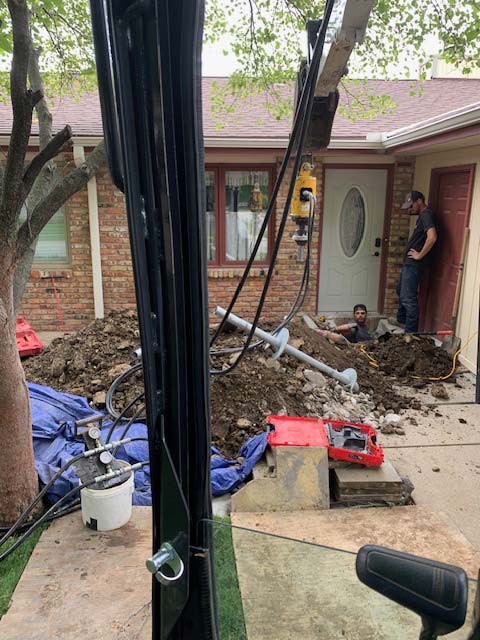
Step 2: Prepare the Installation Area
The installation area around the foundation is then marked off, any obstacles in the way of the installation site are removed, and the site is excavated, providing access to the existing foundation.
Step 3: Helical Pier Installation
The helical piers are turned into the soil until they reach the depth and torque necessary to support the building’s weight. The helical piers are secured to the foundation using brackets.
Step 4: Raising the Foundation
After the helical piers are in place, the foundation is raised to maximum practical level, or as much as possible without causing damage. It’s important to note that there’s always the possibility that the structure can’t be raised without causing even more damage.
Step 5: Fill the Excavated Area
The excavated soil is replaced, and the area is restored to its original condition as much as possible.
How Much Does Helical Pier Installation Cost?
The cost of helical pier installation is determined by the foundation’s size, type, location, existing condition, and installation depth needed to stabilize the structure. The average cost ranges between $1,000 and $4,000 per pier. However, the price can be higher for commercial or complex residential projects.
How Long Do Helical Piers Last?
Generally speaking, helical piers are known for their exceptional durability and longevity and can last for decades, even up to a century.
One of the main reasons for their long-lasting performance is the robustness of the materials that make up these piers. Helical piers are typically made from high-quality steel, which provides excellent resistance to corrosion and rusting.
Another factor contributing to the longevity of helical piers is that they are installed deep into the ground, below the frost line. This ensures that the piers remain stable and secure even in freeze-thaw cycles, which can be damaging to more traditional foundation systems. Regarding maintenance, helical piers don’t need regular inspections or adjustments.
Why Might an Existing Foundation Need Helical Pier Installation?
The most common reason an existing foundation might need helical pier installation is differential settlement or when a foundation is settling into the ground unevenly. Most foundations will settle slightly into the ground after they’re built. This is pretty normal, and as long as the settlement is uniform, there’s usually nothing to worry about. Differential foundation settlement is another matter. Differential settlement puts enormous stress on a foundation, and if it isn’t promptly repaired, it can lead to severe structural damage.
The best way to explain the difference between uniform and differential settlement is through a graphic:
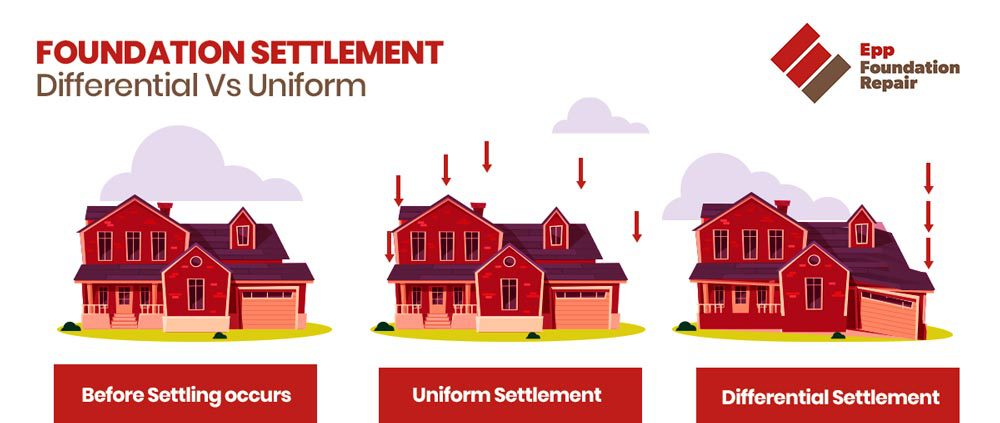
So, What Causes Differential Settlement?
Differential foundation settlement occurs due to a variety of factors, including the following:
- Expansive soil – This is soil containing a high percentage of clay. It swells and shrinks based on changes in moisture content and is one of the leading causes of differential settlement. This is because when the soil becomes saturated and starts to expand, this creates movement under the foundation.
- Erosion-prone soil – Another major contributing factor to differential foundation settlement is erosion-prone soil. As the soil washes away, voids form under the foundation. If the foundation settles into the voids, there will be problems.
- Inadequate soil preparation – Soil not adequately compacted before construction can also lead to differential foundation settlement. This happens because the uncompacted soil compresses under the weight of the building, causing the foundation to settle unevenly into the ground.
- Natural disasters – Earthquakes, floods, tornadoes, etc., can all cause differential settlement.
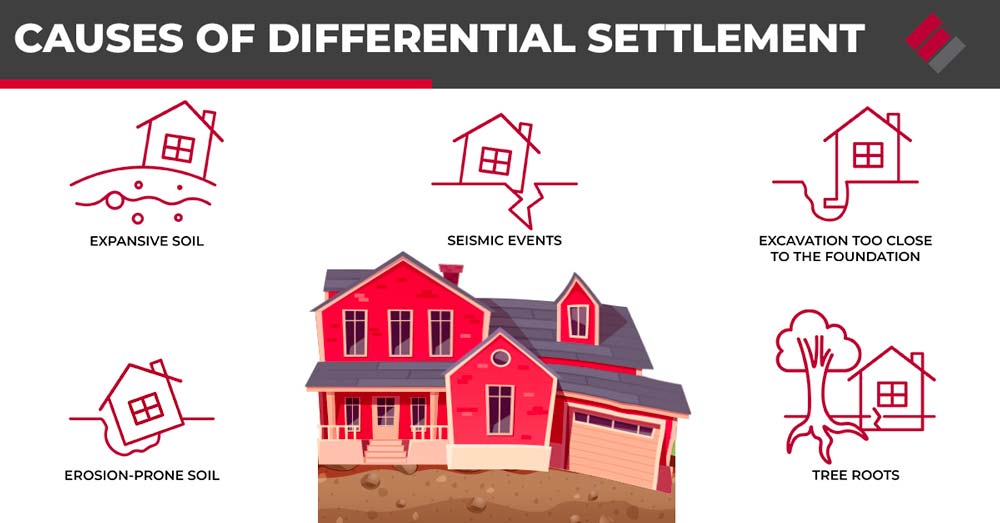
How to Help Prevent Differential Foundation Settlement
Since excess soil moisture is a leading cause of differential settlement, homeowners can go a long way toward preventing trouble by controlling groundwater around the foundation. Here are some ways to do that:
- Clean gutters regularly – Cleaning gutters periodically is an essential step in protecting your foundation. Clogged gutters can cause water to spill over the side of your house and soak into the ground around the foundation.
- Install downspout extensions – Downspout extensions redirect runoff away from your home’s foundation and into a safe drainage area. Without extensions, the water that flows out of your downspouts can pool near your foundation.
- Regrade your yard – Regrading your yard to ensure that it slopes away from the foundation can also help prevent foundation problems. A yard that slopes towards your home can cause groundwater to drain toward the foundation.
- Install a drain tile system -When it comes to foundation waterproofing, nothing beats a drain tile system. Drain tile systems are buried pipes that help direct collected groundwater away from your foundation before release. For more information, see What Is Drain Tile?
- Keep trees away from the foundation – Trees have roots that can invade the ground under the foundation and cause a lot of damage. Plant trees a safe distance from your home and remove any trees that pose a risk to your foundation.
If you think your home’s foundation might need helical pier installation, contact us today to schedule a foundation evaluation. The top cities we serve are – Lincoln, Omaha, Grand Island, Kearney, Norfolk and many more.

